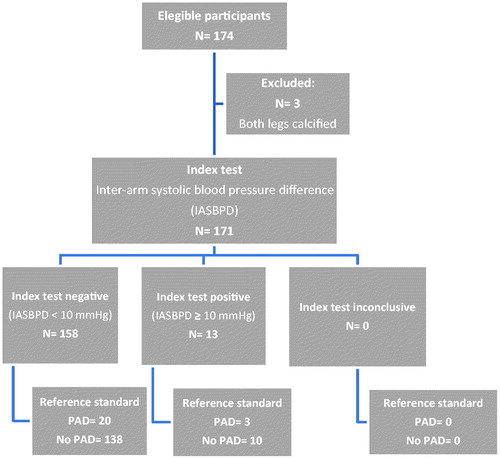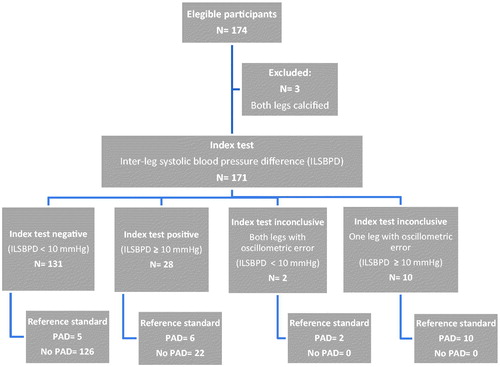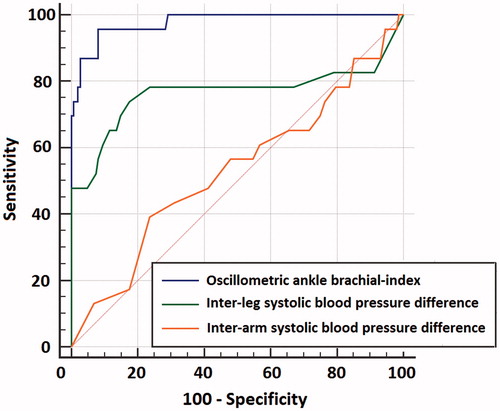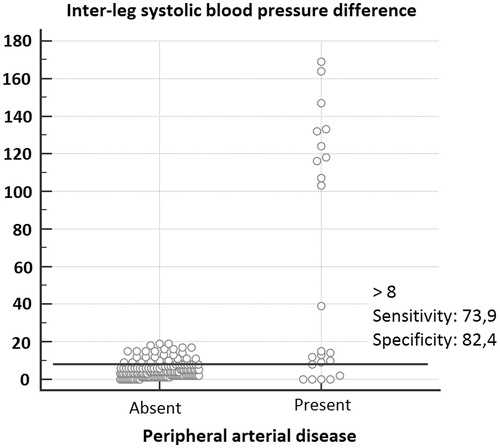Figures & data
Figure 1. STARD flow chart of inter-arm systolic blood pressure difference (index test) to detect peripheral artery disease according to Doppler ankle-brachial index (reference standard). IASBPD: inter-arm systolic blood pressure difference, PAD: peripheral arterial disease.

Figure 2. STARD flow chart of inter-leg systolic blood pressure difference (index test) to detect peripheral artery disease according to Doppler ankle-brachial index (reference standard). ILSBPD: inter-leg systolic blood pressure difference, PAD: peripheral arterial disease.

Table 1. Characteristics of the participants by inter-leg systolic blood pressure difference.
Figure 3. Hierarchical receiver operating characteristic curves for inter-arm systolic blood pressure differences, inter-leg systolic blood pressure differences and oscillometric ABI according to Doppler ankle brachial index (reference standard). Legend. Area under ROC curves for inter-arm systolic blood pressure difference, inter-leg systolic blood pressure difference, and oscillometric ankle brachial-index were 0.532 (95% CI: 0.394–0.669), 0.765 (95% CI: 0.616–0.915) and 0.977 (95% CI: 0.950–1.000), respectively.

Table 2. Diagnostic performance of peripheral artery disease indicators as compared with Doppler ankle-brachial index.
Figure 4. Interactive dot diagram for an inter-leg systolic blood pressure difference ≥10 mmHg testing for peripheral artery disease. Legend. Ten out of 10 unilateral leg oscillometric errors —with inter-leg systolic blood pressure differences ≥100 mmHg— were true positives for peripheral artery disease, increasing sensitivity from 54.6% to 69.6%.

